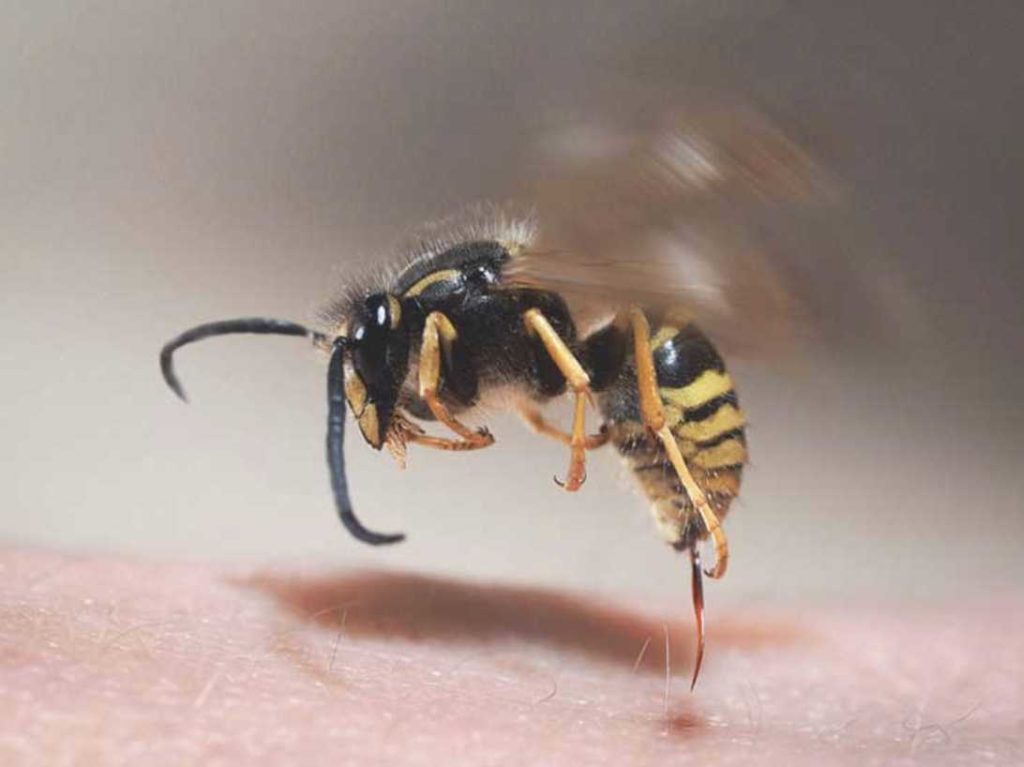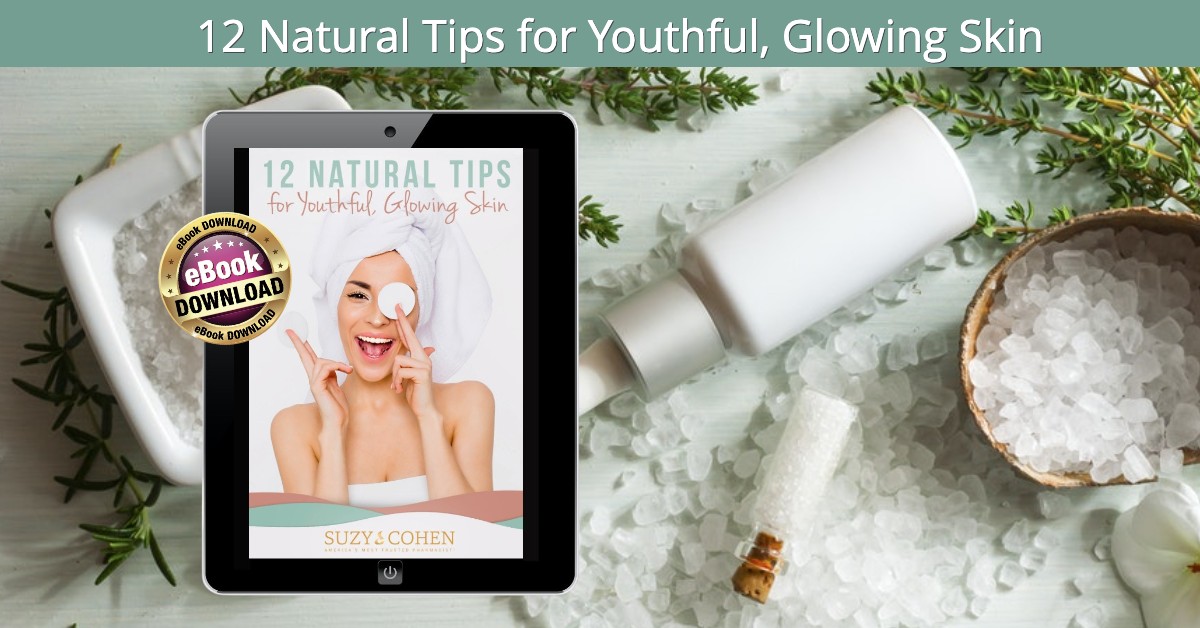Nothing can ruin a perfectly nice picnic or hike like an insect sting! It could lead to local discomfort, swelling, redness and pain. In fact, it could cause an anaphylactic reaction to those people who are truly allergic to an insect’s venom. We all know that if you ignore them, they will usually go about their business of pollinating and leave without any attacks. I often sit on my deck or porch with them buzzing all around and they do not concern themselves with me because I am not nearly as appetizing as the blue hydrangeas and daisies. It’s not easy to train yourself to ignore them. It’s more likely you’ll make sudden movements and wave your arms or swat the air. I totally get it. Today’s article is to help you avoid a sting. If you do happen to get stung, CLICK HERE to read my article, 8 Quick Ways to Soothe Bug Bites and Stings.

Here are 16 of my best tips to avoid an insect sting:
- Don’t wear red! Red can appear to be very dark or black, a color bees and wasps associate with a predator, so they will go on the defensive and get angered. Their eyes are created to identify the colors of flowers. The brighter it is the more drawn to it they are. The same is true with regard to the clothes that you wear. If you wear bright colored clothes, you could easily be mistaken for a flower. In fact, do not wear a flowery shirt because they’ll have to get up close to you to see that you’re not actually a plant! If you use a laundry detergent with UV brightener, beware. You are almost certain to attract any bees that are around. The best colors to wear depends on who you ask. For example, beekeepers wear white because they think it is ideal. Red appears dark to insects which they mistake for a predator. But according to Peta, “To avoid contact with wasps, never work in the yard or garden wearing yellow or white, since these colors attract insects. Many insects cannot see red, making it a good color to wear when working in the yard.”
I think your best bet is to wear neutral earth tones that make you blend in with the flora and fauna, such as beige, khaki, maroon, black or grey. - Avoid fruit-flavored lip gloss, shampoo or soap.
- Don’t walk up to their nest; they will defend it with their life!
- Do not wear perfume or perfumed deodorants.
- Do not use scented shampoo, conditioner or lotion.
- Dispose of soft drink cans and bottles because they attract bees. It’s sort of like sugar-water, and they love it.
- Bugs are partial to beer, lol! Make sure you keep an eye out so one doesn’t crawl into your beer for a sip, and then you drink a mouthful!
- If you’re gardening or on a hike, and happen to have long hair, put it up into a cap, or hair clip. Bees, but not so much wasps, seem rather unafraid to fly into one’s hair/face.
- Make sure you’re clean. Some insects get ‘angry’ if they smell sweat.
- Wear long sleeves and long pants to cover as much as possible.
- Avoid bananas, this might attract bees because they think you’re food!
- Be on the lookout if you have flowering plants.
- Watch out if you are near discarded food or dog feces.
- Wasps have a keen sense of smell and detest wormwood, peppermint, spearmint, eucalyptus and thyme. If you wanted to dab yourself with these essential oils, it might deter them from coming too close. For that matter, you could plant these in your garden to act as a natural insect repellant.
- Speaking of smell, bees love nectar, so if you have a bowl of peaches or apricots set out on your outdoor dining table, they will smell it and zoom in for a taste!
- If you’re camping or on a picnic, cover the food you’re not using. Keep containers closed as much as possible.
What should you do if they do come near you or you do get stung?
Try to remain calm. Freaking out and swatting when there’s no reason may cause the bug to become frightened and sting. If an insect flies into your car, calmly pull over, roll down all your windows (and moon roof) and get out of the car until the insect flies away on its own. If a bee or wasp settles on you, you’re probably apt to panic and run. I understand, I probably would too, but according to some experts, it would be more ideal for you to be still and let it fly off on its own.
They are not apt to sting a person unless they feel endangered.
If you get stung, move away to safety quickly. Don’t worry about getting the stinger out in that moment, just get away. Here’s why: The bee’s alarm pheromones smell similar to bananas! When a bee stings a person, it emits this banana-like pheromone which tells their cousins that there’s ‘food’ over here! Others may come over to join the party and sting you shortly after the first one.
Pheromones are common in the animal kingdom and they’re sophisticated. The release of pheromones is one method for how insects communicate with one another. Humans also secrete pheromones, especially when attracted to someone else. Bees can only sting a person once, but it will release a chemical that attracts other bees in the area. Wasps can sting repeatedly so if you get bit, run away from the space as quickly as possible. Bees will leave the stinger in the skin, but wasps don’t usually do that. It’s best to scrape the stinger away from you with a credit card, or a letter opener or something like that versus a tweezer which might squeeze more venom into you. Usually hydrocortisone cream, calamine lotion or aloe helps with immediate first aid, however, some people need an antihistamine or numbing agent. CLICK HERE to read 14 Home Remedies for Bug Bites.
In closing, here’s a fun fact! Honeybees and wasps can remember faces! Honeybees have about a million neurons (we have 100 billion), but science suggests that they can ‘remember’ you so if you swat at them for no reason, you better watch out! 😉

Suzy Cohen, has been a licensed pharmacist for over 30 years and believes the best approach to chronic illness is a combination of natural medicine and conventional. She founded her own dietary supplement company specializing in custom-formulas, some of which have patents. With a special focus on functional medicine, thyroid health and drug nutrient depletion, Suzy is the author of several related books including Thyroid Healthy, Drug Muggers, Diabetes Without Drugs, and a nationally syndicated column.


